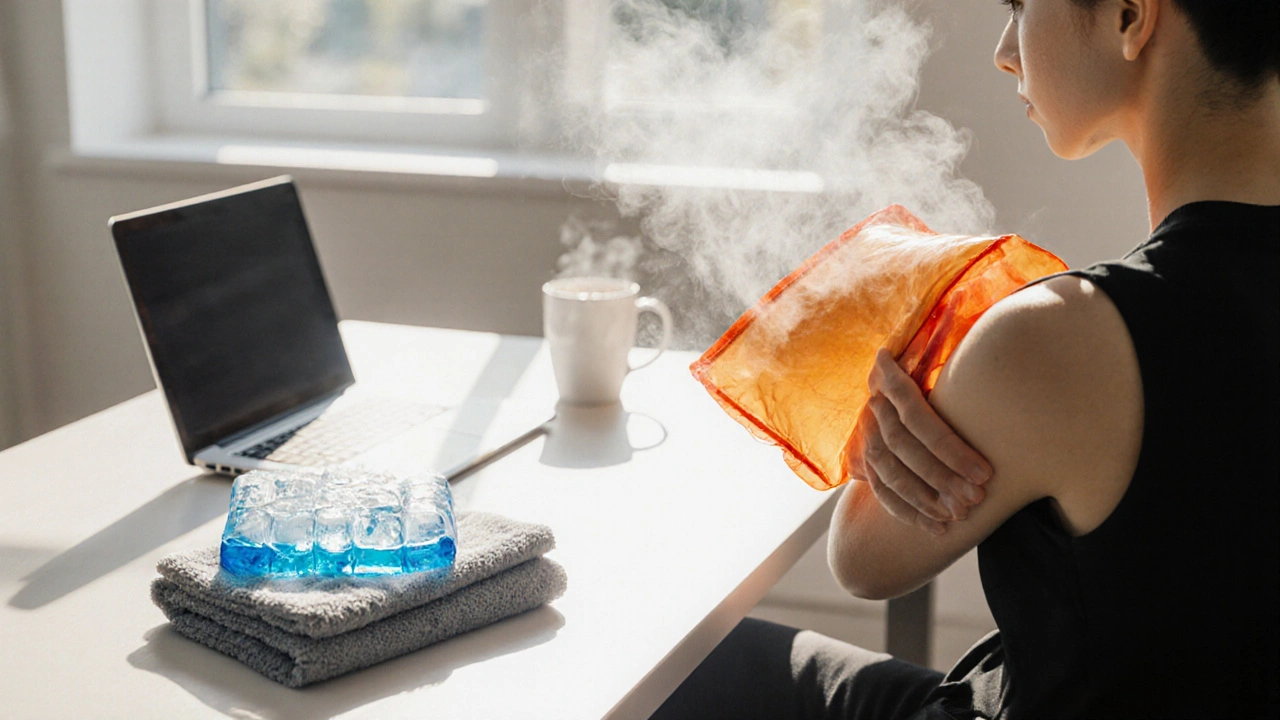Heat Therapy: Natural Relief and Recovery for Men
When working with heat therapy, the application of warmth to relieve pain, boost blood flow, and aid tissue repair. Also known as thermal therapy, it serves as a simple yet powerful tool for everyday health challenges.
One of the biggest wins of heat therapy is its impact on skeletal muscle conditions, issues like strains, spasms, and chronic muscle pain that limit movement and strength. Warmth relaxes tight fibers, improves circulation, and speeds up the removal of metabolic waste. If you’ve ever felt a sore calf after a run, a short heat pack can turn stiffness into flexibility within minutes. The technique works best when the temperature stays between 38–45 °C and the session lasts 15–20 minutes, allowing muscles to absorb heat without overheating.
Beyond muscles, heat therapy plays a crucial role in palliative care, the multidisciplinary approach that eases suffering for patients with serious illnesses. For those battling cancer or chronic heart failure, gentle warmth can calm neuropathic pain, reduce spasm‑related discomfort, and improve sleep quality. Combining heat with other palliative measures—like low‑dose analgesics and counseling—creates a holistic relief plan that addresses both body and mind.
Stress management also intertwines with heat therapy. When you’re stressed, blood vessels constrict, and muscle tension spikes, making pain feel worse. Applying heat triggers vasodilation, which lowers cortisol levels and invites a calming response from the nervous system. A warm bath before bedtime can shift the body from fight‑or‑flight to rest‑and‑digestion, helping you unwind and prepare for deeper sleep.
To get the most out of heat therapy, follow three simple rules: choose a safe heat source (electric pad, warm towel, or hot water bottle), monitor the temperature with your hand (it should feel hot, not scalding), and limit each session to 20 minutes to avoid skin irritation. Avoid heat on open wounds, areas with reduced sensation, or when you have acute inflammation—cold may be better in those cases. Staying hydrated supports circulation, making the heat work faster.
Below you’ll find a curated collection of articles that dive deeper into each of these angles—how heat eases muscle pain, supports palliative treatment plans, and pairs with stress‑reduction strategies. Browse the posts to discover practical tips, scientific insights, and real‑world examples that can help you integrate heat therapy into your daily routine.
Heat vs Cold Therapy: Fast Relief for Muscle Ache
Learn when to use heat or cold therapy for muscle aches, how each works, safe application tips, and quick home remedies for fast relief.
© 2025. All rights reserved.

